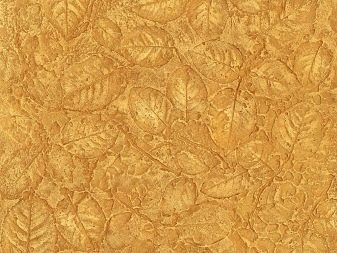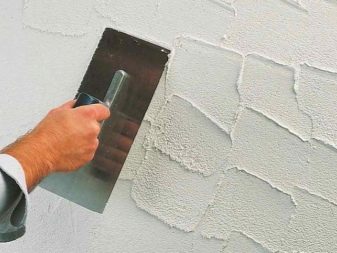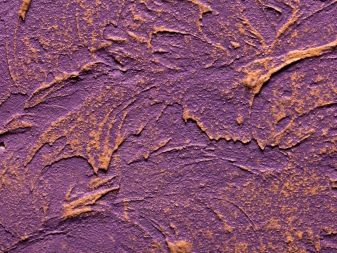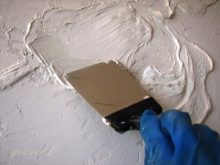Artistic plaster for walls: properties and features of the application
There are several alternatives to the traditional design of the walls. One of them is artistic plaster. Thanks to her, you can create a unique coating.
Special features
For the first time a special composition for covering walls with artistic plaster was made in ancient Egypt, and was used to decorate the tombs of the pharaohs. The composition of artistic plaster included chalk and glue.
This type of coating carried not only a decorative function, but also well concealed rough seams and irregularities of the walls.
The use of artistic plaster, as a separate type of art, is to realize three-dimensional forms on the walls. The texture of the material is a dense flexible structure that creates the illusion of diverse effects.Thanks to the plaster, created geometric patterns, historical motifs and abstract images.
A true artist will be able to create a beautiful and original piece using decorative plaster. Drawing can be replaced with a mural, namely, apply a wet material. This in itself is a finished work that covers a specially prepared base.
The painting of the Venetian style is presented in a favorable light. Visually, it is comparable to a wall of marble, and looks like a stylish image of times of deep antiquity. Decorative art plaster possesses original stylistics and will perfectly decorate any room.
Properties
The properties of this decorative material are amazing. It is this matter that attracts both from an aesthetic point of view and from the convenience side in terms of its application:
- During cleaning, you can not worry about the quality of the plaster. Due to the water repellent structure, it is allowed to use cleaning products.
- Another advantage is ultraviolet resistance. The color appearance of the material does not lose its saturation.
- The ability to dream up, namely, to create stunning textural wall images.
- High frost resistance prevents problems in the cold season.
- Flexibility, strength and elasticity help to preserve artistic plaster on surfaces for a long time.
- Environmentally friendly material makes it absolutely harmless to the outside world.
Kinds
Venetian plaster creates an imitation of marble. Glossy appearance is perfectly combined with such matters as nacre, gold and silver. Application technology includes installation of 3-12 layers, each of which should be dried before applying the next.
- Textured plaster. Relief distinguishes it over the entire surface or in some part. When one layer dries, others are applied. Relief pattern should form a specialist. Moreover, the amount of options is limitless and depends on the specialist.
- Structural decorative plaster manufactured with large similar inserts. Bark beetle is one of the most common types of plaster. It is often used in the design of facades and rooms for storage.The application of artistic plaster takes place with the help of specially prepared trowel. The master must align the surface with the thickness of the inclusions.
- Another type of artistic plaster - flocks. The mixture contains various colored particles of not quite spherical shape, which are painted on the production level. Flocks need to be applied in a rather original way. Initially, an adhesive agent is applied to the wall, and then flocks are “thrown over”. On top of this, material is placed on the surface for protection.
Basics of decorative plaster
Putting art plaster can be executed independently. The main thing is to make sure that the sequence of all stages of finishing is observed
To achieve your goals, you will need to stock up on the following tools:
- plummet and level;
- grater;
- spatulas;
- rule and trowel;
- specialized tool for applying relief.
The work includes several stages.
- It is necessary to determine the figure and prepare all the tools that will be needed for use. When working, you should always have a relief sample at hand to precisely repeat all the contours.
- We begin to prepare the surface. Be sure to clean the walls of the old material, align with the rough and primed them.
- The first plaster layer will lay flat on the dried wall. This will be the basis for the application of the finishing layer. It is necessary to properly dry the material applied and re-primed the surface.
- When the ground is completely dry, the final layer is applied. With it, the relief will be formed. In many applications, one part of the plaster is poured into a homogeneous mass, and from the inside left textured grooves. This technology will allow a simple relief to look original and more interesting.
- Coloring agent. In accordance with the material selects the desired method of staining. The paint should highlight the luxury of the decorative coating.
Decorating the walls with artistic plaster requires strict adherence to the installation rules. Introducing independent innovations in the technology of embossed manufacturing will have a bad effect on the result. To create a high-quality decorative artistic coating will take a single day. This is not the case when you need to hurry.The main thing - thorough drying of each layer.
How to decorate your own wall with decorative plaster, see in the video below.











































